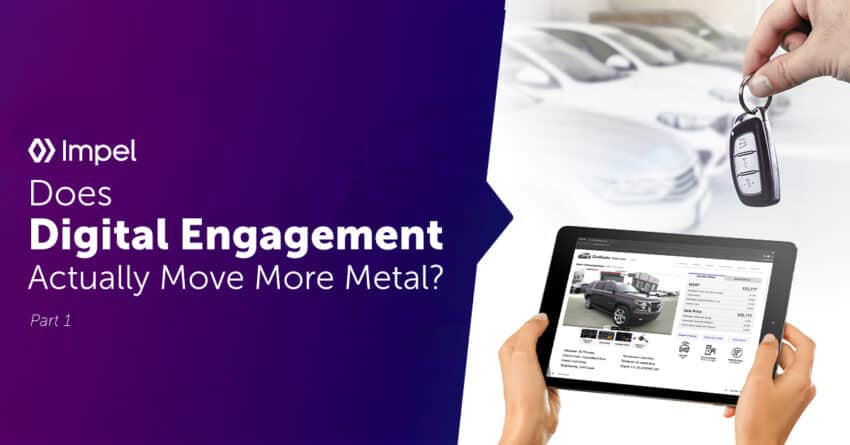
The automotive industry’s increasing need to move the sales process online based on rapidly changing consumer behavior has resulted in greater automotive software options than ever before. Dealers are no strangers to vendor pitches and demo requests, all with similar claims about their ability to drive sales. From digital advertising and inventory management tools to digital retailing and chat software, it can be overwhelming for dealership stakeholders to make informed decisions regarding marketing budget allocation. However, the true challenge is distinguishing between effective and wasteful spend. Dealers can spend their entire marketing budget attracting and engaging prospective buyers yet lack the necessary insights to determine which marketing and merchandising tools are directly influencing vehicle sales.
In this two-part blog series, we’ll cover the industry-wide challenge of measuring the correlation between online shopper behaviors and actual vehicle purchases, the limitations of lead submissions as a KPI, and the results of a landmark study by Polk Automotive and Impel that uncovered and quantified the relationship between digital engagement and vehicle purchase rates.
The Problem with Lead Submissions
It’s no mystery that lead form submissions are often a leading KPI when considering effectiveness. Lead submission is often easily measurable for dealerships and is traditionally considered the most purchase-ready action. However, approximately 98% of a dealer’s total site traffic will never submit a lead – and only 24% of in-market buyers (and eventual purchasers) actually complete a lead form. This disparity highlights the key challenge in the industry: lead submissions only tell a very small part of a large, complex story. When lead conversion rates are upheld as the gold standard, automotive retailers risk missing the majority of the shopping traffic, as well as all of the other touchpoints that materially assisted in the lead or sales conversion. Leads represent a very small percentage of the viable prospects visiting a dealer’s site.
The shopper journey from awareness to final sale is far too nuanced and complex for any single measure to adequately reflect without a larger analysis of the entire process. Prospective buyers repeatedly visit multiple sources of information as they journey through the sales funnel. Google’s recent study indicates that a shopper can interact with as many as 90 digital touchpoints over the course of 90 days. Those are just digital interactions!
All these touchpoints along the buying journey create a much more holistic view of what matters to vehicle shoppers today, and which tools and platforms they’re relying on to make an informed purchasing decision. Behavioral and engagement metrics along the entire sales process are key for automotive sellers who want to truly understand their shoppers’ buying behaviors and key influence points along the way.
The Digital Merchandising Impact Study
Linking online activity with offline behaviors has always been a challenge in the automotive space. While it’s easy to draw a line between lead submission and vehicle purchase, it’s more difficult to establish direct correlation between engagement behaviors and actual sales conversions. Time spent on page and other engagement metrics are generally accepted as purchase intent indicators, but there’s a lack of data that clearly quantifies the relationship between online engagement and vehicle purchases.
To address this need, Impel launched a six-month-long study in partnership with Polk Automotive Solutions (an iHS Markit company). Our objective was to quantify the relationship between digital engagement and vehicle purchase rates. Specifically, we wanted to gain insight into how different levels of merchandising engagement impacted vehicle purchase rates, and the specific actions and activities buyers were engaging in prior to the actual sale. To do this, we examined shopper interactions with specific merchandising tools including photos, 360° walkarounds, vehicle feature highlights and educational F&I content. In addition, we identified the shopper behaviors that were most prevalent among the highest-value shoppers.
Impel collaborated with Polk Automotive to leverage their comprehensive, anonymized database of U.S. vehicle sales and registration data, analyzing the shopper behaviors and vehicle purchase rates of nearly 4 million anonymous online automotive shoppers across more than 200 dealership websites, including over 60,000 vehicle purchases. The specific behaviors and levels of engagement of vehicle purchasers were compared against non-buyers.
The Digital Merchandising Impact Study revealed the relationship between digital engagement and sales conversions, demonstrating that every click on a dealership’s website is a buying signal. We’ll dive into the data in part two of this blog series.

